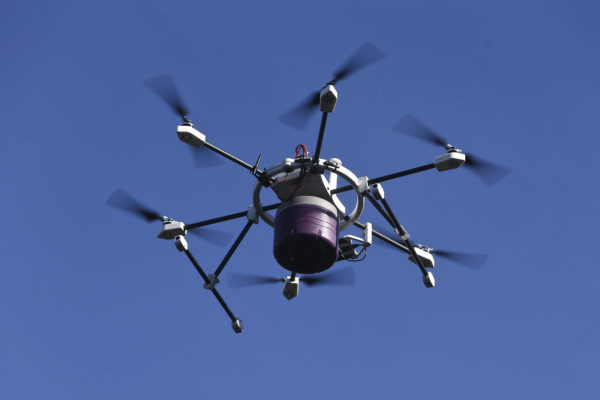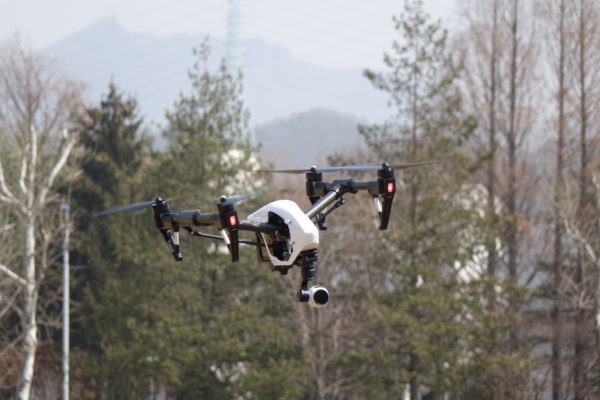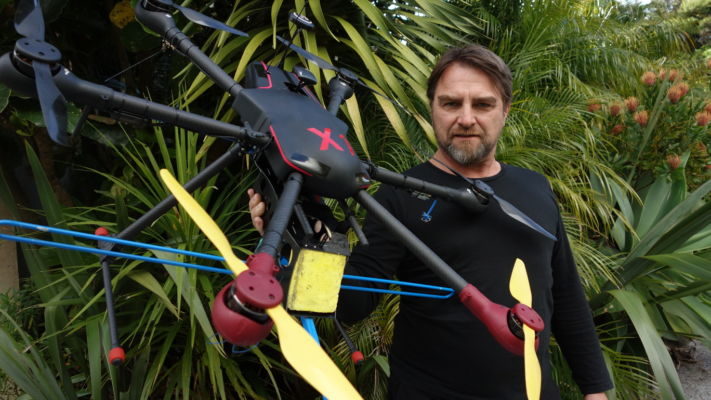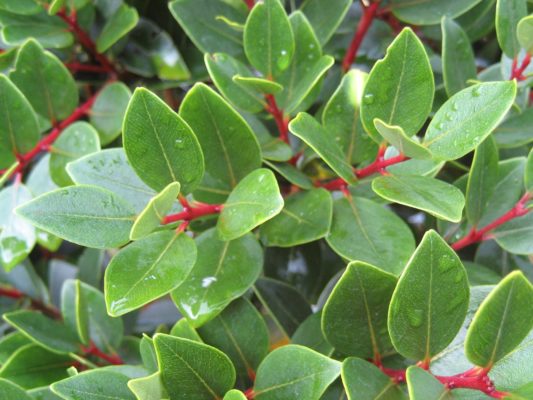The technology associated with Unmanned Aerial Vehicles (UAVs) is getting smart and sophisticated. These intriguing little machines are more than just Christmas toys. High-end models are proving their worth in a whole variety of ways including detecting water deficiencies in agricultural crops and mapping invasive species. They’re even being trialled as a delivery method by companies such as Amazon.

So could they be useful in the battle to be predator free? A group of New Zealand researchers – Craig Morley, Robin Hartley, Duncan Macmorran, James Braodley, Ian McLean and David Herries – put the case for involving UAVs in future precision pest control operations in an Open Access article recently published in the journal ‘Rethinking Ecology’. They see definite opportunities for UAVs to contribute to Predator Free 2050 goals.
“Unmanned Aerial Vehicles (UAVs) and remote image sensing cameras have considerable potential for use in pest control operations. UAVs equipped with remote sensing cameras could be flown over forests and remnant bush sites, particularly those not currently receiving any pest control, to record the unique spectral signature of the vegetation and to detect the presence of possums (Trichosurus vulpecula) and the damage they cause. UAVs could then be deployed to precisely distribute either toxins or kill traps to these identified locations.”

Sounds perfect – what’s the catch? Just how far away is the technology?
“Current challenges associated with UAVs include payload capacity, battery limitations, weather, and flying restrictions. However, these issues are rapidly being resolved with sophisticated technological advances and improved regulations.”
UAVs have some clear advantages over traditional methods of predator control – including cost and accessibility factors.
“UAVs provide flexibility, can fly in remote and difficult terrain, and are considerably cheaper to purchase and operate than the planes and helicopters currently used in conventional aerial pest control operations.”
If the whole prospect sounds a bit futuristic and far-fetched, just check out some of the things that UAVs can do currently.

“Multispectral and hyperspectral sensors attached to UAVs can be flown over most terrain to assess the health of the vegetation below. Hyperspectral sensors are able to detect plant stress through colour changes, enabling detection of leaf disease and tree damage. Intelligent flight management systems and Geographical In¬formation System (GIS) analysis platforms can now generate repeatable and accurate surveys providing characterisation of many biological variables, including vegetation.”
The authors also point out a number of limitations with current pest control programmes in New Zealand.
“Despite the enormous investment and ongoing pest control work, many parts of New Zealand still receive little or no pest control including many commercial and private forests, agricultural land with patches of bush/forest, localised reserves, and alpine areas. These areas may be geographically inaccessible, have low pest numbers, or have restricted access, and can support reservoir pest populations when pest control is undertaken nearby. Unfortunately, the large-scale pest management programmes run by organisations such as DOC or TBfree NZ are potentially compromised because adjacent areas may receive no pest control.”
They believe current predator control methodology is both unsustainable and incapable of achieving PF2050 goals.
“Realistically, the reliance on thousands of trap-lines and aerially bombarding some large remote areas with 1080 every few years is ultimately unsustainable. Consequently, in order to be predator-free by 2050, there needs to be a quantum shift in current thinking and practice. UAVs offer one such opportunity. We therefore propose deploying UAVs, first, as a monitoring tool to detect possums and the damage they cause, and second, to deliver a precise load of toxin (or kill-traps) to populations not currently under any control programme. This approach would reduce a reliance on labour-intensive and often imprecise monitoring systems such as the foliar browse index.”
So how can UAVs do it better? The authors take possums as their example.

“Detection of foliage damage using hyperspectral signatures is now achievable and could be used to enable rapid detection of pest activity, or even of the pests themselves. Possums are known to selectively defoliate tree species including kamahi (Weinmannia racemosa), northern rātā (Metrosideros robusta), kohekohe (Dysoxylum spectabile), tree fuchsia (Fuchsia excorticata), and other plant species. Pests also target young pine (Pinus radiata) trees in commercial plantations. Identifying that damage using remote sensing cameras on UAVs is a new tool that could enable managers to precisely target pest management activities.”
Still think it sounds far-fetched? Then consider this:
“Although UAV technology is still in its infancy, precision deployment of UAVs has already been used to spray pesticides on crops, control invasive weeds, manage wildfires, initiate back-burning fires by dropping balls filled with potassium permanganate powder, and deliver biological control agents over soya bean crops.”
The future may be closer than you think…
The full article is freely available through both the publishing journal, Rethinking Ecology and through Researchgate.

